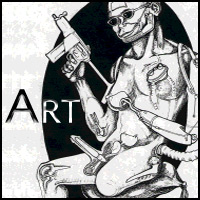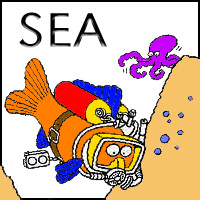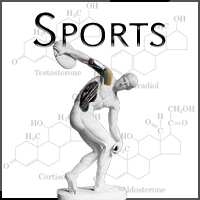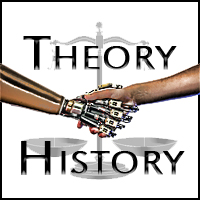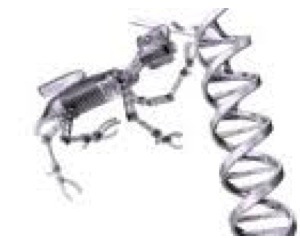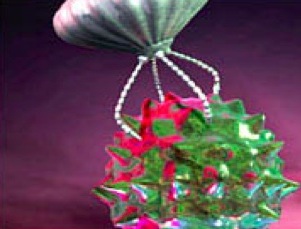
Nature Using Technology Using NatureAniela Sobel One of the long awaited technological breakthroughs of our time is the development of machines small enough to be injected into the body. These nano robots, also called nanobots or medibots, are one of many developing sciences that would have been written off as science fiction even 10 years ago. The idea of humans creating a machine with molecules from our own biological makeup is a cyborgian melding of man and machine. While these nanobots are not fully functional yet, research is continuing steadily and successfully.
The first lab tests in this area began in 1994. Computer scientist Leonard M. Adleman of the University of Southern California used strands of DNA to solve a mathematical problem: “Given seven points linked by one-way paths, find a route that visits each point once on the way from a specified starting point to a given end point.” (Peterson, 2002) In 2003, Benenson et al. of the Weizmann Institute of Science released a study on the properties of DNA that make it ideal as the base material in molecular computing and nanotechnology. These researchers found that the specific base-pairing qualities of DNA make it one of the few molecules that can assemble in an aqueous environment. DNA can control the assembly of proteins and form amazing biological constructs including nanowire and molecular switches, as well as input, output, and software. To encode information, these computers used single stranded or double stranded DNA. Power came internally from the DNA backbone or from external ATP sources. These were the first and most informative experiments with a fully constructed nanobot. (Benenson et al., 2003) In 2004, Access Science reported on the work of these researchers 2 years later. Research had found that extracting results from nanocomputers was so difficult that the team changed their direction and pursued a computer that could diagnose and treat cancer on its own. This computer was programmed to detect the genes that become over active or underactive in prostate and lung cancer. The nanocomputer was successfully tested but not flawless. (Goho, 2004)
Based on this research, more recent studies have been made. A preliminary research report studied the possibility of harnessing or recreating the flagellum (tail) movement of sperm as a method of moving nanobots around the body. The flagellum, as observed in nature, evolved with a helix of mitochondria in order to produce the ATP needed to propel the sperm 7 inches per hour. The human equivalent of this impressive distance would be a man of 6 feet swimming 3.7 hours in the same time. In this study, it was discovered that instead of the normal twisting shape that proteins usually assume, the sperm proteins used a “scaffold-like support” that runs along the tail. Using this information, work began to recreate this scaffolding on a tiny gold chip using the same proteins. Using mouse sperm proteins as well as synthesized ones, they discovered that both proteins performed exceptionally well at breaking down glucose. The success of this new method of supplying power to nanobots was a huge breakthrough and these researchers are also working to recreate the protein at the end of the tail that serves as a “tailpipe” to emit the waste created by producing this energy. (Nelson, 2008) A report from the BBC described how Dr. Banyopadhyay developed one molecule in a 17-molecule machine that allows someone to control the other sixteen remotely. This machine is made from molecules of a chemical called duroquinone, each molecule has the shape of a ring with four independently rotating spokes. One molecule becomes the control molecule and is surrounded by the other sixteen, connected through hydrogen bonding. The researchers use a scanning tunneling microscope (STM) to instruct the control molecule to switch states while the control molecule instructs the other sixteen. Using this method, the researchers are able to induce four billion possible outcomes. These researchers began work on a device that involved eight of their structures with attached devices created by other research groups. One group developed the “world's tiniest elevator”, capable of moving a lift up and down less than one nanometer. In the simulation, all eight machines functioned as intended with a single instruction. (Fildes, 2008) In January 2009, New Scientist reported on a two-legged nanobot developed by researchers at the University of Oxford, which can walk along DNA strands. This nanobot is powered by the reaction of nearby molecules, caused by the DNA feet that act as catalysts. While this idea is not entirely new, the Oxford research team's device has had more success. This new walking nanobot doesn't wander from the track, fall off, or destroy the track. The machine is designed so that only one foot can lift at a time and it cannot take a step backwards, solving the problems with walkers that have existed in the past. (Griggs, 2009)
Nanotechnology is a widespread and ongoing research project that will someday aid great leaps in the advancement of modern medicine. It is predicted that nanotechnology will benefit medical fields from genetics to surgery. These nanobots will someday have the possibility of delivering medicine to specifically affected cells and tissues and assisting in surgery. By controlling the power of the nanobot, scientists can potentially control the rate at which medicine is administered, how long and how fast the nanobot can move, and how long it is active. The work being done is based in using molecules already present in the body, so that fear of machines in our bodies being unnatural can be limited. Nanobots being injected will be no different to the widely accepted practice of vaccinations. Many breakthroughs in genetic therapy can also be explored with the possibility of nanobots that can walk along a strand of DNA and target a specific gene or mutation and alter it, without cells needing to be cultured and altered outside the body. Remotely controlled nanobots can modify humans from the inside and propel us towards the next step in our evolution, following the cyborg epistemology of “thesis, antithesis, synthesis, prosthesis.” (Gray, 2002) Works Cited
Benenson Y, Adar R, Paz-Elizur T, Livneh Z, Shapiro E. “DNA molecule provides a computing machine with both data and fuel.” 13 Jan 2003. PNAS. |




